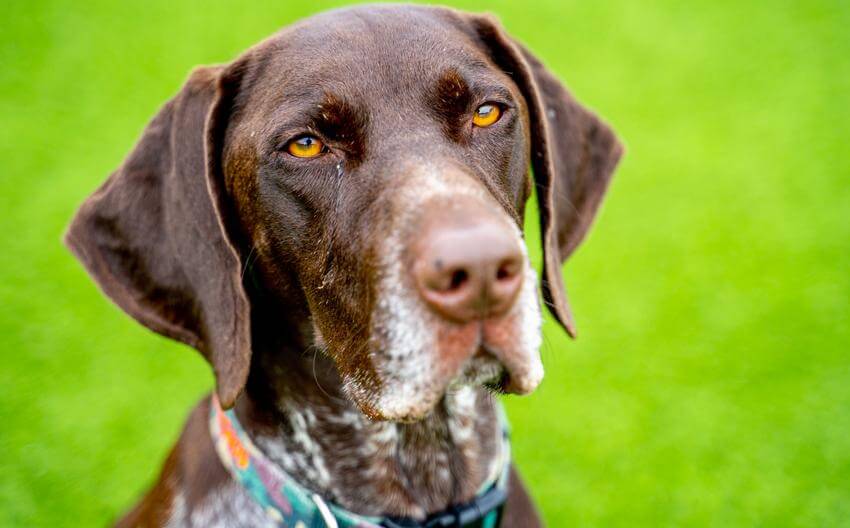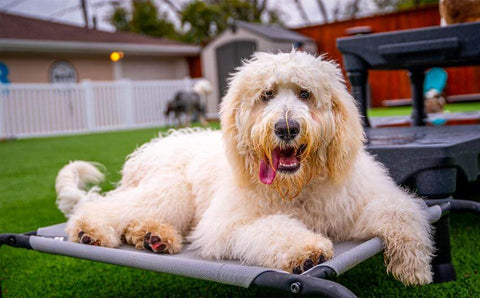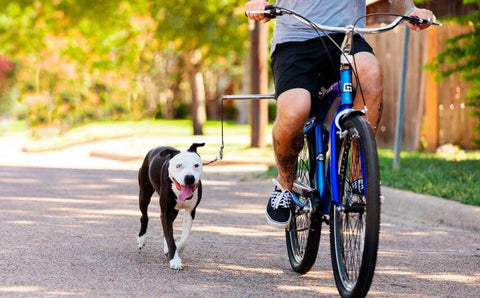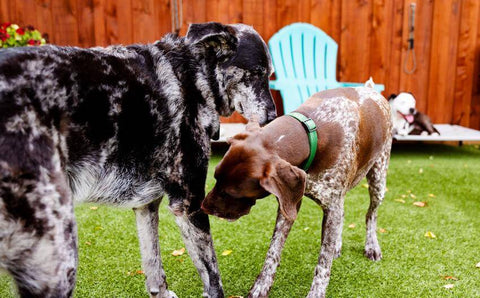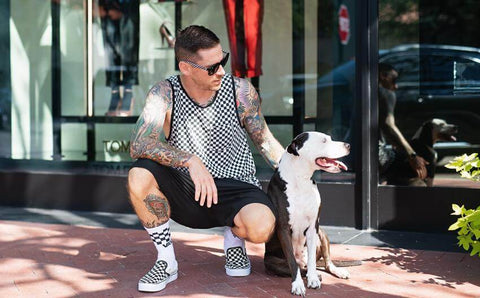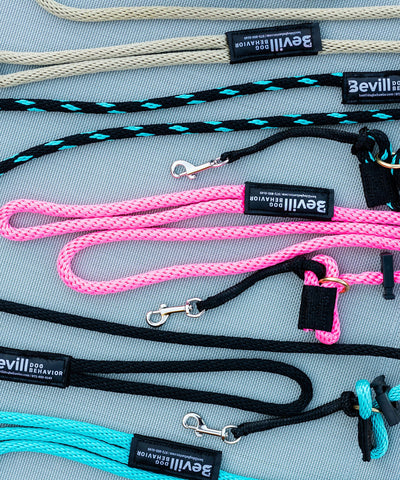Today we’re taking a look into our dog’s mind. What are dogs thinking? How does a dog’s mind work?
We’d be remiss if we did a series on Dog Behavior 101 without talking about what’s going on in between our dog’s ears. A basic understanding of the dog’s mind can help you better meet your dog’s needs and create a balanced, happy human-dog relationship. So what are dogs thinking? How does a dog’s mind work?
Do you remember those old treat commercials where the dog is running around the house, sniffing and trying to find bacon? While we don’t necessarily advocate processed dog treats, and we think our dogs are a lot smarter than that commercial gives them credit for...however, it did get one thing right: dog’s senses directly form their reality.
Most of what’s going on in a dog’s brain at any given moment is directly related to the immediate information their senses are sending them. Dogs are born with their eyes and ears closed, but their nose active. They smell first. Then a week later their eyes open and another week later their ears come into play. So the nose is the primary source of information for a dog. Dogs collect information via:
- Nose (60% of information collected)
- Eyes (15%)
- Ears (25%)
This is, of course, very different from how humans collect information. We can’t say this enough: dogs and humans are different creatures. This is why it’s so important not to look at, talk to, or touch a dog when you first meet them. You must ignore the dog at first (it’s hard-we know), allow them to smell you without adding pressure, confusion, or expectations.
Aside from the way we collect information, it’s also important to recognize the differences in what we do with that information. Let’s refer to the following chart:

Humans take the information we get from the outside world and connect (or disconnect) to it on an emotional, intellectual or spiritual level - often a combination of the 3. Dogs on the other hand, operate on a strictly instinctual level. Their instincts, which we could equate directly to their thoughts, are about reacting to, and living in, the present moment. That is to say that dogs naturally exist in the here and now, a state which us humans have to consistently work to achieve. Their instincts/thoughts are about survival, or how to act/react in the present moment.
Where we might be busy planning our work day or scrolling through social media, our dogs are more focused on what’s immediately in front of their noses. It’s a beautiful thing. In fact, dog brains are always doing these three things:
- Reflecting the energy around them
- Responding to the environment (and environmental change)
- Recalling associations
Associations are neurological responses to scent, sight, sound or energy. Dogs have the unique ability to pull up these associations and apply them to the present moment, without being drawn into the past. Put simply: dogs think and live in the here and now, but are affected by neurological responses they’ve created from past experiences.
We will discuss the importance of energy in a later installment, but for now suffice it to say: your energy (emotions x intentions) around your dog speaks volumes more than your words. You can tell your dog a million things and they won’t understand a lick of it. To that same end, if you are calm and confident, your dog can feel the same way.
As for responding to the environment, we have two options
- Control the environment itself
- Control how our dog views the environmental change
Controlling the environment can be as simple as choosing the table on the patio that provides the least stimulation. It could mean not allowing an overly-excited and emotional human to pet your dog. It could also mean crating your dog during a party or walking your dog on the outside of the dog park rather than going inside the dog park (because we all know dog parks are basically fight clubs).
Controlling how your dog views the environment is totally different. This is where you need to take the time to condition your dog to environmental stimuli. For example: door bells, other dogs on the walk, squirrels, the trash truck, etc.
Now, once the environment changes and your dog is presented with a decision, there are 4 basic response options:
- Fight
- Flight
- Avoid
- Accept
In the fight response, the brain moves forward and the dog uses it’s available tools to make something “stop”, “change”, or “go away.” This can be growling, showing teeth, lunging, biting, flailing, shaking their head or pawing.
In flight the brain moves backwards. Here the dog tries to flee a situation, to create distance from something they are unsure of. Distance equals safety. And safety equals comfort.
In avoid, the brain ignores, trying to mentally make a situation go away. This looks like sitting or laying away from a situation, or turning a head to the side and avoiding looking at it. Imagine being on a sugar-free diet and a coworker putting a box of Krispy Kreme donuts on your desk. You might just turn away because looking at the donuts is too hard!
Finally, in the accept (or surrender) response, the brain collects information and is comfortable with what’s happening in the moment. The dog is okay with what is going on, and is a willing participant. Here the dog is comfortable, polite, calm and accepting. This is a beautiful place for your dog’s mind to be.
<< Previous Article: Introduction: Part TwoNext Article: Four States Of Dog >>

